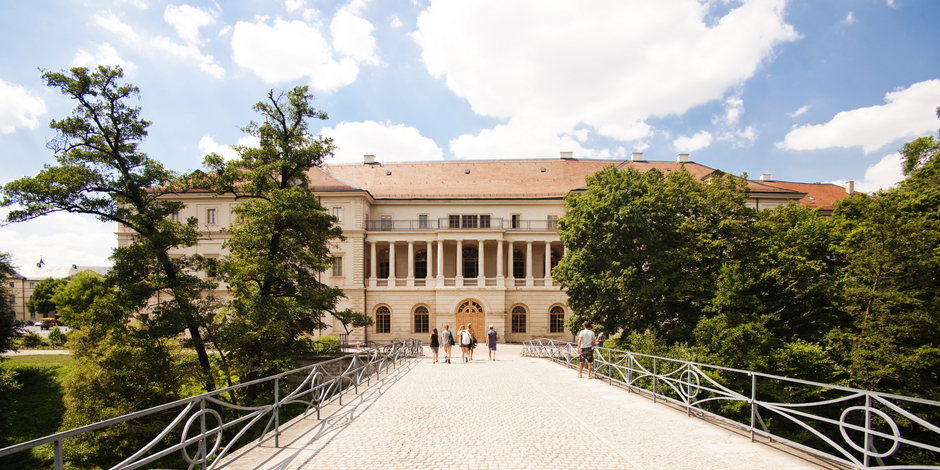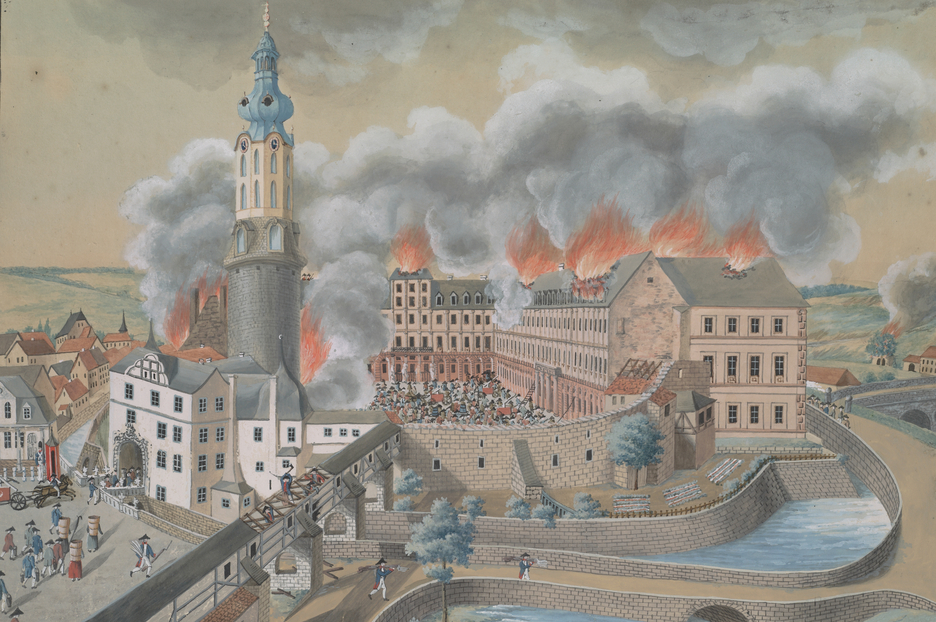Projects of the Klassik Stiftung Weimar are funded by the European Regional Development Fund (ERDF) and the Free State of Thuringia, represented by the State Chancellery of Thuringia, Department of Culture and the Arts.


Moated castle – Hornstein – Wilhelmsburg – Castle Museum
The history of Weimar’s castle began in the 10th century where a medieval moated fortress once stood. After a fire in 1424 and the return of the Ernestine dynasty von Wittenberg to Weimar in the mid-16th century, the castle was redesigned in a Renaissance style, known thereafter as Castle “Hornstein”. In 1618 another fire destroyed the castle. Rebuilding efforts began the following year, supervised by the master builder Giovanni Bonalino who designed a four-wing complex. After the Thirty Years’ War, Duke Wilhelm IV commissioned Johann Moritz Richter the Elder to oversee construction of what became known as the “Wilhelmsburg”, a three-wing Baroque-style complex open to the south.

Another devastating fire gutted the castle in 1774, leaving only the enclosure walls standing. Reconstruction efforts began in 1789 when Duke Carl August appointed a castle building commission headed by and significantly involving his friend Goethe. One by one, the architects Johann August Arens, Nicolaus Friedrich Thouret and Heinrich Gentz were enlisted to create a new ducal residence within the enclosure walls of the east and north wing. The classical interior design dates back to this period, the most impressive examples of which are the staircase and ballroom. The Berlin sculptor Friedrich Tieck was commissioned to furnish the rooms with sculptures and busts.
In 1816 Clemens Wenzeslaus Coudray started planning the west wing, which was completed in 1847 with the consecration ceremony of the castle chapel. Along with the ducal family’s private chambers, the west wing also contains the Poets’ Rooms, which were decorated by the Grand Duchess Maria Pavlovna between 1835 and 1847. These memorial rooms honour the great poets of Weimar: Christoph Martin Wieland, Johann Gottfried Herder, Friedrich Schiller and Johann Wolfgang Goethe. The construction of the south wing from 1912 to 1914 under the supervision of Grand Duke Wilhelm Ernst closed off the courtyard to the park. The City Castle was converted into a museum in 1923.